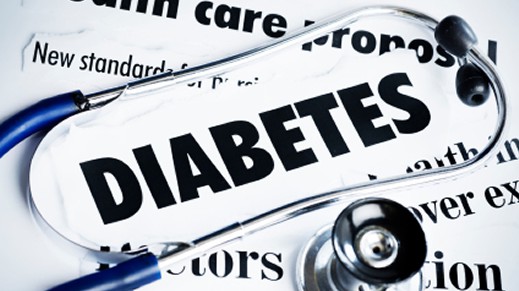
A derivative of the drug niclosamide – currently used to treat parasitic worm infections – has now been found to relieve diabetic complications in mouse models of type 2 diabetes by inducing mild mitochondrial uncoupling.
The drug – oral niclosamide ethanolamine salt (NEN) – increased energy expenditure and lipid metabolism in mice, and it also demonstrated efficacy in preventing and treating hepatic steatosis and insulin resistance induced by a high-fat diet.
NEN was also shown to improve glycemic control and delay disease progression, researcher Dr. Shengkan Jin, PhD, of Rutgers University-Robert Wood Johnson Medical School in Piscataway, N.J., and colleagues report in the journal Nature Medicine.
Nearly 30 million Americans suffer from type 2 diabetes, which occurs when the body does not produce enough insulin, or the insulin that is produced does not function properly, causing abnormal blood glucose levels. Healthy lifestyle behaviors, including diet and exercise, are key to managing type 2 diabetes, but most patients require anti-diabetic drugs, as well.
There are many different types, or classes, of drugs used to treat type 2 diabetes. Though they work in different ways, the purpose of these various drugs is to lower blood glucose levels. Sulfonylureas and meglitinides, for instance, work by stimulating the beta cells of the pancreas to release more insulin, while biguanides (like metformin) reduce the amount of glucose produced by the liver.
However, most current therapies do not address the underlying cause of insulin resistance in peripheral tissue, and patients often become refractory to treatment, the researchers note. “Development of new anti-diabetic drugs with new mechanisms of action, in particular those targeting the cause of insulin resistance, is important to improve diabetes therapy,” they write.
Mitochondrial uncoupling key to reducing intracellular lipid accumulation
Although it is not entirely clear how lipid accumulation leads to insulin resistance and type 2 diabetes, it is increasingly clear that fat accumulation in the liver and muscles plays a major role, Dr. Jin notes. Reducing or even eliminating fat accumulated in the liver and muscle may be key to eventually curing type 2 diabetes, he says.
Mitochondrial uncouplers reduce the proton gradient across the mitochondrial inner membrane, creating a futile cycle of glucose and fatty acid oxidation without generating ATP (cellular energy). Transgenic mouse models that express mitochondrial uncoupling proteins in the liver or muscle have been shown in several studies to exhibit elevated fatty acid oxidation and reduced intracellular lipid accumulation. They also showed significant resistance to weight gain induced by feeding a high-fat diet and were protected from diet-induced insulin resistance.
“The effect of mitochondrial uncoupling on reducing intracellular lipid accumulation prompted us to search for safe mitochondrial uncouples and evaluate their potential use for type 2 diabetes treatment,” the researchers write.
They note that the best known chemical mitochondrial uncoupler is 2,4-dinitrophenol (DNP), which was used as a weight-loss drug in the 1930s. The drug did increase metabolic rates and promoted weight loss, but it was withdrawn from the market because it caused hyperthermia, tachycardia, and other adverse effects at high doses. A 2011 review identified 62 deaths related to DNP.
The salt form of niclosamide has been studied extensively in animals, and long-term oral treatment of high doses of NEN (ranging from months to over a year) did not show adverse effects in mammals, including rats and dogs.
Niclosamide works by reducing the ability of parasitic worm’s mitochondria to synthesize ATP (cellular energy), thus inhibiting worm growth. In the new study, led by Dr. Victor Jin of the Department of Pharmacology, Rutgers University–Robert Wood Johnson Medical School, researchers exploited this activity of the drug.
NEN targets underlying causes of insulin resistance
To test the anti-diabetic properties of the drug, Dr. Jin and colleagues first conducted pharmacokinetic and tissue distribution studies in NEN-treated mice. Next, to examine the metabolic effect of oral NEN, the researchers fed one group of mice high-fat diets (HFD) alone and another group HFD with NEN at levels well below those shown to have adverse effects.
They found that NEN predominately accumulates in the liver and reduces the ability of the mitochondria in this organ to efficiently synthesize ATP. The lower cellular levels of ATP results in the activation of a signalling molecule, which signals the liver cells to increase the burning of stored fat.
Dr. Jin and colleagues also reported that the reduction of fat in the liver cells enabled them to respond to insulin and reduce levels of blood glucose. This finding is particularly important as it indicates the drug may reverse insulin resistance, a hallmark of type 2 diabetes that occurs when cells fail to respond to insulin, thus resulting in high blood glucose levels.
To determine the mechanism by which NEN improves glycemic control, the researchers then compared the organs and tissues of mice fed either HFD alone or HFD containing NEN. The team found that increased intracellular fat burning in the liver of the treated mice reduced the incidence of fatty liver, another common complication of type 2 diabetes. “Consistent with the fact that NEN is distributed primarily to the liver after oral treatment, the most striking difference between the two groups of mice was the size and appearance of the liver,” they report.
“Oral NEN increases energy expenditure and lipid metabolism in mice. It is also efficacious in preventing and treating hepatic steatosis and insulin resistance induced by a high-fat diet,” the authors conclude. “Moreover, it improves glycemic control and delays disease progression in [diabetic] mice.”
“Given the well-documented safety profile of NEN, our study provides a potentially new and practical pharmacological approach for treating type 2 diabetes,” the team adds.
